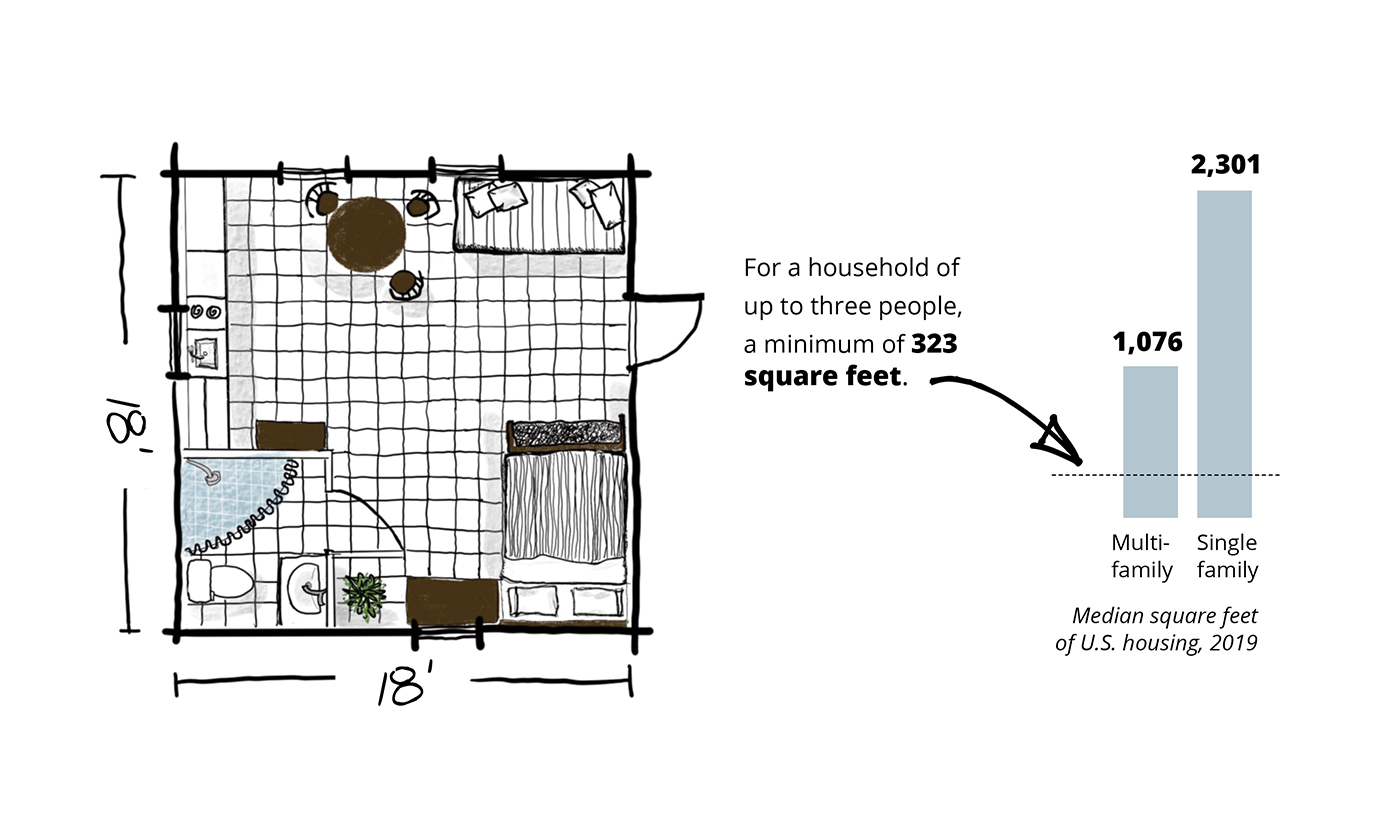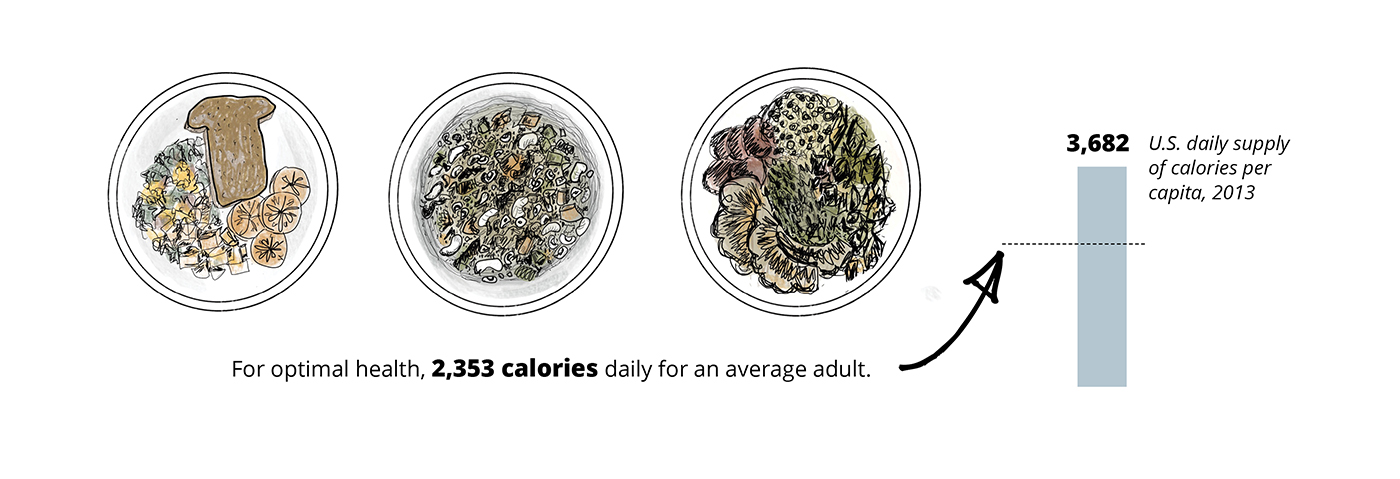45 Energy, Housing, Food, Water: What’s a Fair Share?
Learning Outcomes
- Apply the reading process to “Energy, Housing, Food, Water: What’s a Fair Share?”
- Summarize the text.
- Respond to the text.
- Connect the ideas in the text to your personal experience.
Preview the Infographic
Follow the steps below to preview the infographic “Energy, Housing, Food, Water: What’s a Fair Share?” Ideally, you should print the infographic and write your responses in the margins of the printed copy. To read more about previewing, visit the chapter on previewing a reading.
- Read the title. What does it make you think about? What do you think the infographic is about? Record your ideas on the printed copy of the article next to the title. What questions do you have? Record them on the printed copy of the text.
- Scan the text and notice the organization. There are headings (e.g. What’s a Fair Share of Energy?), and each is followed by a paragraph or sentence and then a visual. Read the headings and glance at the visuals. What additional predictions do you now have about the article? What additional questions do you have? Record them on the printed copy of the text.
- Scan the bolded and underlined vocabulary in the text. If there are any words that you do not know well, look them up in a print or online dictionary and write some notes about their meanings on the printed copy of the article. Keep in mind that some words have multiple meanings. You may need to read the sentence containing the word to understand the word’s usage.
- Based on your preview of the infographic, what do you think is the central point? (Don’t worry if you are not sure. This is a prediction or guess – you do not have to be correct as long as you are engaging your brain.) Record your prediction on the printed copy of the text.
- What could be the purpose of the infographic? Make a prediction and record it.
Read Interactively
Now, read the text and study the infographics in more detail using the guidelines from the chapter on reading interactively. As you read, follow these steps to engage with the text.
- Pause to confirm or revise your predictions and to answer the questions you posed while previewing the text. Write down those revised predictions and responses to the questions as you read. If you cannot find the answers to your questions, save them for further research and discussion.
- Pause to check for understanding of the visual information. Can you explain the images in your own words yet? If not, examine them more closely.
- Pay attention to any vocabulary words that are confusing. Look up the words in a dictionary if they are interfering with your understanding, or mark them to return to later.
- Record any opinions or reactions you have to the reading.
- Write down any further questions that develop as you read.
Energy, Housing, Food, Water: What’s a Fair Share?
August 10, 2021
What’s a Fair Share of Energy?
1 Equitable resource distribution requires the world’s affluent countries to reduce their ecological impact while low-income nations gain greater access to resources until there is convergence. And where should that convergence happen? For energy distribution, researchers at the International Institute for Applied Systems Analysis say the minimum global energy flow required to achieve universal decent living standards could be as low as 500 watts per capita. Less draconian, the International Energy Agency projects that the U.N.’s Sustainable Development Goals can be achieved worldwide with an energy flow of about 1,300 watts per capita—about what Cuba uses.
Data source: World Bank, latest International Energy Agency data available for each country.

What’s a Fair Share of Housing?
2 A solidly built home with adequate floor space, electric lighting, thermal comfort, and good indoor toilets. How much? For a household of up to three people, a minimum of 323 square feet plus 107 additional square feet per occupant beyond three.
Sources: Narasimha Rao and Jihoon Min of the International Institute for Applied Systems Analysis, “Decent Living Standards: Material Prerequisites for Human Wellbeing,” 2017; Statista.

What’s a Fair Share of Food?
3 An adequate daily consumption of protein, vitamins, and minerals. How much? For optimal health, 2,353 calories daily for an average adult.
Sources: World Health Organization; U.N. Food and Agriculture Organization. Note: Food supply data measures the food available for consumption at the household level but does not account for food wasted or not eaten at the consumption level.

What’s a Fair Share of Water?
4 A safe, reliable water supply. How much? Minimum of 13 gallons daily per capita.
Sources: Narasimha Rao and Jihoon Min of the International Institute for Applied Systems Analysis, “Decent Living Standards: Material Prerequisites for Human Wellbeing,” 2017; USGS, 2015.

This article was originally published by YES! Media and is reprinted here with permission. Read the original article.
Illustrations by Jana Frederick Sanders/YES! Magazine.
Tracy Matsue Loeffelholz is the former creative director at YES!, where she directed artistic and visual components of YES! Magazine, and drove branding across the organization for nearly 15 years. She specializes in infographic research and design, and currently works with The Nation, in addition to YES! She previously worked at The Seattle Times, The Virginian-Pilot, Scripps Howard Newspapers, Rocky Mountain News, The Denver Post, The Connecticut Post, The San Diego Tribune, The Honolulu Advertiser. She lives on Bainbridge Island, Washington, and currently serves on the board of the Bainbridge Island Japanese American Exclusion Memorial Association. Tracy speaks English
Reflect
After reading, reflect on the infographic and your reading/viewing process. See the chapter about reflecting for a discussion of why this is a crucial step.
- Try to paraphrase the main idea in a sentence. This may be challenging. If you are struggling, do your best. You can refine this when you examine the infographic more closely to summarize it.
- What is the purpose of the text? In other words, why do you think the author created it?
- Which predictions were accurate, and which ones did you revise as you studied the text and infographics more closely?
- As you previewed the text, you wrote questions. What questions remain unanswered?
- What else do you want to know about the topic? Write down any additional questions.
- How did previewing help you to understand and engage with the text and images?
- Where did you struggle to understand something in the text, and how did you work through it?
- What, if anything, could you have done differently to improve your process?
Summarize
Complete a summary of the infographic by following these steps. Make sure you have read the chapters about Reading to Summarize before proceeding with the summary.
- Reread the infographic and complete the Summary Notes. See Preparing to Summarize for a review of this topic and an example. TIP: For the major supporting points, focus on writing one sentence for each section of the text.
- Then, use your Summary Notes to write a one-paragraph summary. See Writing a Summary for a review of this topic and an example. Make sure that you include in-text citations and the Work Cited.
- Use the self-assessment/peer review questions from Evaluating the Summary to self-assess your summary or invite a peer to provide feedback.
- Use the self-assessment or peer feedback to make changes to your summary.
Make sure you are comfortable with your summary before advancing to the response. If you misunderstand something in the text, then your response may be skewed based on that misunderstanding.
Respond
Write a response to the article by following these steps. Make sure you have read the chapters about Reading to Respond before proceeding with the summary.
- Use the Response Questions from Preparing to Respond to brainstorm possible ideas for your response. See the example in that same chapter.
- Read over your replies to the Response Questions. Choose one idea to write about in your response. Express that idea in a topic sentence. See Writing a Topic Sentence for a Response for examples. Ask a peer for feedback on your topic sentence.
- Brainstorm about possible support you could use in your response. See Generating Support for a Response for examples.
- Use your topic sentence and ideas from the list of support to write a one-paragraph response. See Writing a Response writing guidelines and examples. Make sure that you include the Work Cited and in-text citations for any quotes or specific ideas from the article.
- Use the self-assessment/peer review questions from Evaluating a Response to evaluate your response or have a peer provide feedback.
- Use the self-assessment or peer feedback to make improvements to your response.
Extend: Connect
Consider one of the resources identified in the text: energy, housing, food, or water. Determine how much you and your family use each day. Compare and contrast with what the author identifies as a “fair share.” Do you think the author has identified a reasonable amount for the resource you chose? Why or why not? Compare what you found with what your peers learned.

